If you want to immerse yourself in the knowledge of the Pilates Method, you must also know a little history of its creator, since he was a hero inspired by other great heroes, starting from his parents until ancient Greeks and Romans. I could even motivate and inspire you by his life story, so I am not wasting your time and giving a chance to read it and dedicate that moment to a person deserving to be call “This great fighacter."
A LITTLE BIT OF HISTORY
Joseph Hubertus Pilates was born in a small village near Dusseldorf (Germany) in 1880. As a child, he suffered from diseases such as asthma, rickets and rheumatoid arthritis, had an extremely thin physical complexion and used to get ill frequently, to the point of needing a wheelchair to move.
The parents of Joseph influenced him with respect to sport and naturopathy. His father, of Greek origin (his surname originates from the old name Pilatu) had won prizes in competitive gymnastics. His mother practiced naturopathy which was predominant at that time. It is very possible that having grown in such environment, in his childhood, Joseph could be interested in everything connected with training and physical development.
At that time and in that place, when and where Joseph lived, it was not easy to get correspondent books. So Pilates tried to read on various topics such as anatomy, biology, and physics. They said that as a teenager he had used to clean a neighbour's garden in exchange for books of library of the latter, one of the most complete in the tiny city of Monchengladbach.
Being a self-taught person, Joseph Pilates studied Greek and Roman culture, being interested in the forms of training of that time. He was fond of the Greek model because of the importance of its exercise for physical development. Joseph was also interested in the various methods of exercising body of the Western and Eastern world, such as Zen and Yoga.
In his teen years, he used to practice different sports, among others, these were boxing, gymnastics, skiing, swimming and diving.
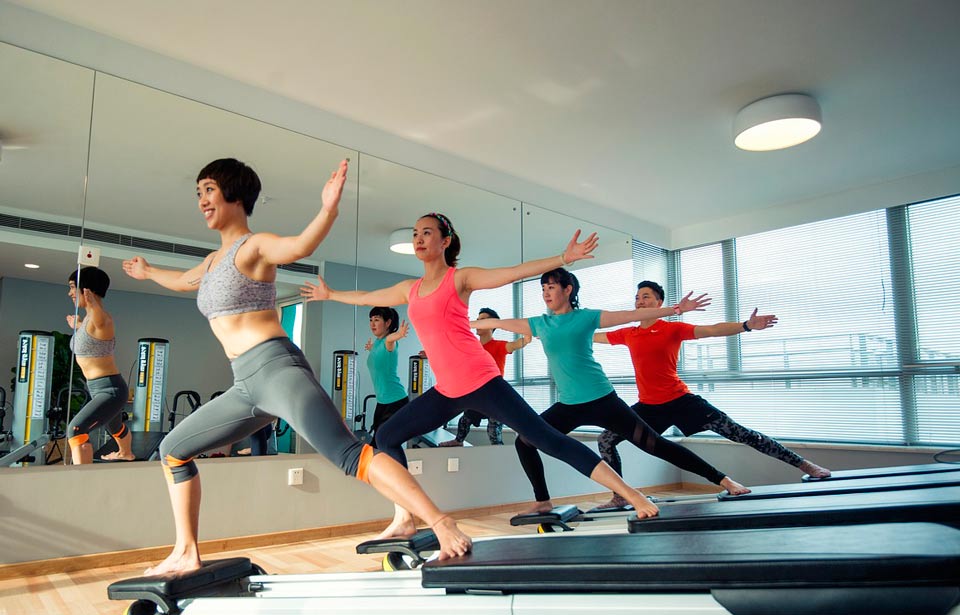
He practiced different gymnastic activities and martial arts where he got his first knowledge about body, motion and health from. His thirst to feel good led him to work hard, physically and mentally. He studied much and worked on creation of a training method to help him do natural movements of his body. At the age of 14, he has already posed as a model for anatomical drawings.
In 1912, he went to England to improve his training and boxing technique and found work as a circus artist. There he was hired to teach self-defence detectives of Scotland Yard. Since the outbreak of the First World War, he was interned in an English labour camp on the Isle of Man because of his German nationality. There, he perfected his method trying to help wounded POWs recover from their injuries. Due to the lack of necessary resources, Joseph had to use his imagination and creativity. That is the reason why its first devices were pulleys, bands, ropes and other similar things. He used even bed springs and worked the exercises already invented for the floor, against resistance.
The recovery experienced by the prisoners was so impressive, that in a short time, guards of the labour camp also began to practice his method. Soon it was established as a compulsory activity in this camp.
In 1918, England was in a terrible flu epidemic; large number of people died; nevertheless, in the prison camp, no epidemic at all. This "miracle" would be connected with benefits of the training system invented by Joseph H. Pilates, a fact contributing his fame to increase.
After the war, he returned to Germany, where he works as a trainer, teaching self-defence classes at the Hamburg Police Department. He also worked with Rudolf von Laban and Eugen Shandow, pioneers of motion techniques.
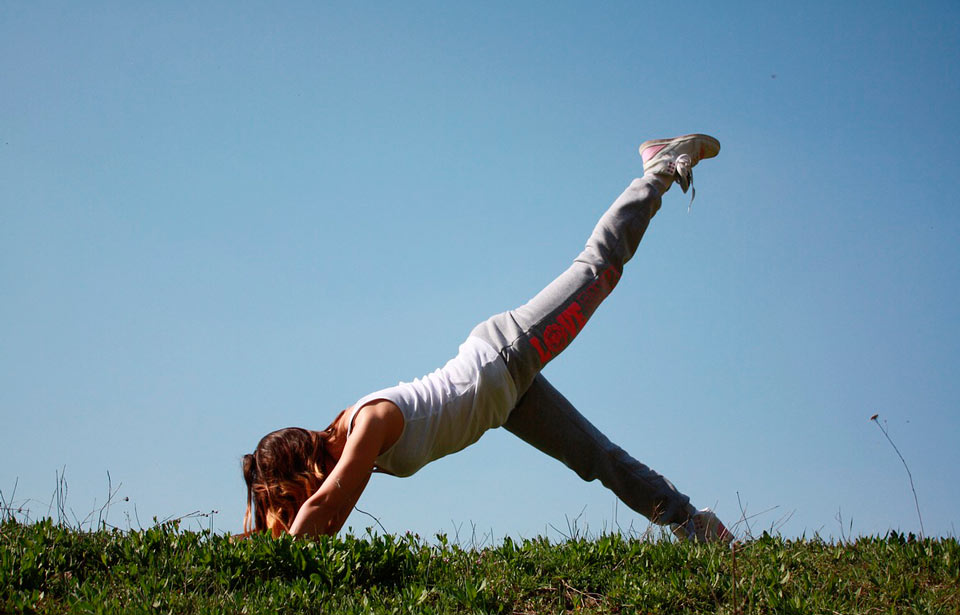
His fame was growing, and many dancers and professional athletes appealed to Joseph H. Pilates for his physical conditioning; he was even offered to train the New German Navy. Pilates, obviously, being in opposition to the contemporary political regime, rejected this proposal. One of the outstanding figures trained by Pilates was the famous boxer Max Schmelling.
When Schmelling wanted to emigrate to the USA, he needs Joe to accompany him to advise him as a boxer to maintain his physical preparation. A representative of Schmelling came to an agreement with Pilates so that Schmelling will study in New York in exchange for accompanying the former. In 1923, Joe went to the USA. On the journey, he met Clara, who became his second wife. She was his assistant and a person who helped him finish developing his method.
He settled in New York, and it was that city, where he continued his work in the area of rehabilitation. Clara and he opened the first Pilates studio in New York, next to the New York City Ballet. Dancers such as Marta Graham and George Balanchine were pioneers in practice of the Pilates method. Many of them attended the gymnasium to recover from injuries, and other people, impressed by the Pilates methods, continued to train with him for years.
In 1945, he published his first book "Return to live through Contrology".
Joseph Hubertus Pilates passed away in 1967 at the age of 87. He died because of a damage of his lungs caused by the fire that had taken place in his study. His wife, Clara, continued teach and distribute the Pilates method and maintained his school in more than ten years until her passing away in 1977.
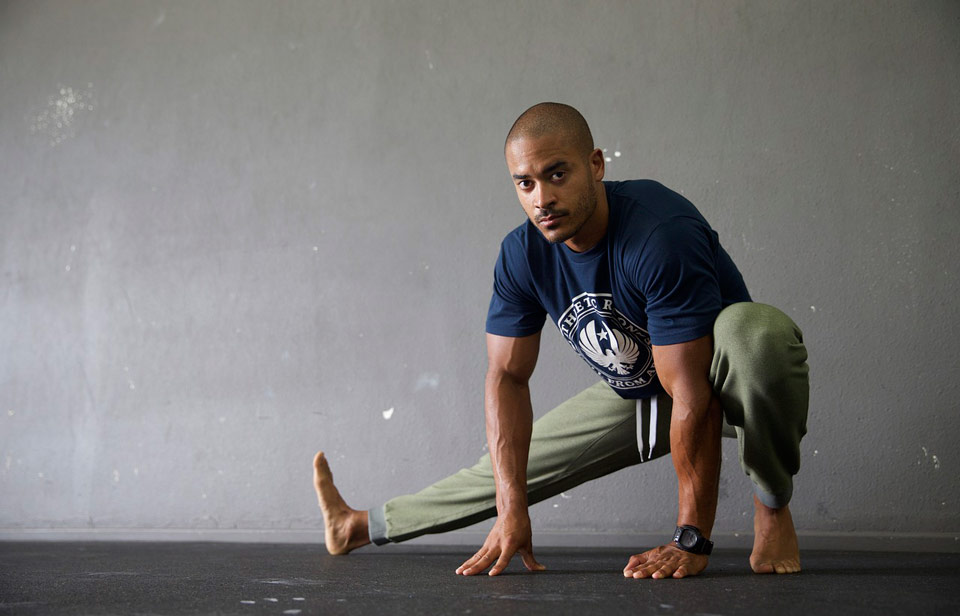
WHAT IS THE PILATES METHOD
As Joseph said in his first book, where Contrology was its title that he had given to the Method:
“Contrology is not a fatiguing system of dull, boring, abhorred exercises repeated daily "ad nauseam." [...] Contrology is complete coordination of body, mind, and spirit. Through Contrology you first purposefully acquire complete control of your own body and then through proper repetition of its exercises you gradually and progressively acquire that natural rhythm and coordination associated with all your subconscious activities” (Joseph Pilates).
It is true that the basic exercises of Pilates are 34 and for those who do not know either the method, or the principles, or much less the dynamics of the Pilates class, one could come to think that it is quite boring to do always the same exercises. I would agree with him / her. But the principles of the method and power to break down the exercises are in son, father, grandfather, great-grandfather and great-great-grandfather of the basic exercise, make it amazing and I have not even named the fantastic machines that Joseph has invented.
Pilates system is not exclusively a set of physical exercises, but it is a conditioning method that involves both body and mind. Pilates is provided in a balanced way by a series of benefits for the body (Strength, Flexibility, Coordination, Balance, etc.), but it also deals with the mind increasing one’s ability to concentrate and reducing the stress level. Both aspects entail increasing of feeling of well-being for an individual practicing it.
The original principles of the method are as follows:
-
- Integral improvement of health.
- Homogeneous Physical Conditioning.
- Breathing.
The Classical Principles are 6 ones focused on How we move in Pilates and clearly DISTINGUISH the method from other Motion techniques. The former are fundamental for understanding and doing the method exercises of the method:
-
- Breathing.
- Concentration.
- Centre.
- Control.
- Precision.
- Smooth flow of Motion.
The purpose is that, under these principles, you become aware of your body, learning to differentiate clearly, what makes you feel good or bad, attentive to changes that occur on your posture, how your muscles work or how move your joints and your spine, respecting the golden rule of the method: "no pain". This is essential to understand why good posture and efficient motion will change your life. The key is to get fit and prevent injuries in a different and very pleasant way.
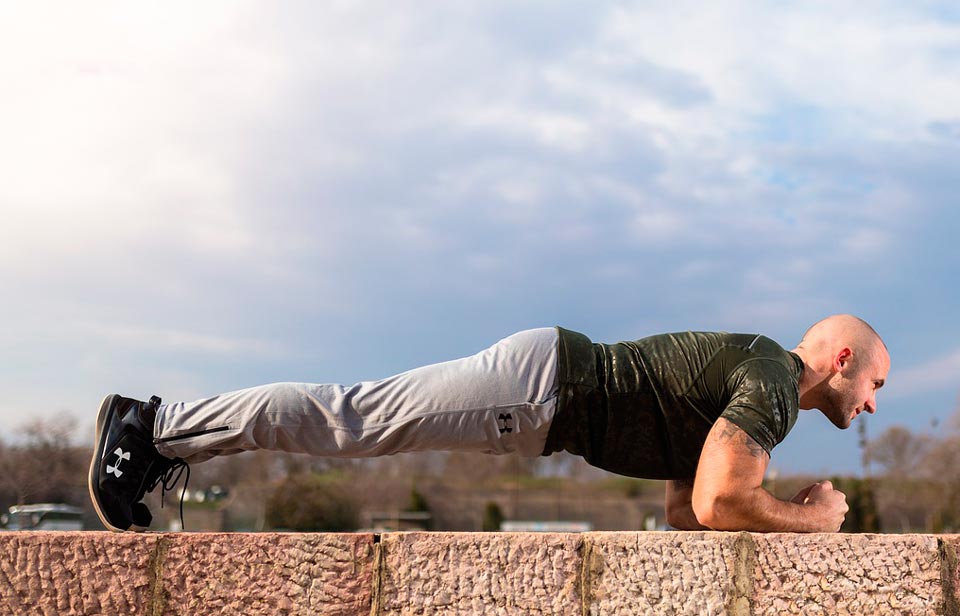
Pilates will make possible for you to acquire new skills through various stages of your studying as follows:
-
- UNCONSCIOUS INCOMPETENCE: When you are not aware that you have lack of this ability to move and you must become aware of your incompetence before your passing to the next stage as follows:
- CONSCIOUS INCOMPETENCE: When you become aware that you do not have that motor skill and you must learn and practice it to be able to pass to the stage as follows:
- CONSCIOUS COMPETENCE: Where to be able to apply the skill you will have to concentrate to do it, it is not yet "the second nature or automatism". For that you must pass to the stage as follows:
- UNCONSCIOUS COMPETENCE: It is acquired as you are driving a car or playing an instrument, in one of the tasks of manual dexterity, knowing how to listen and how to contact.
The ultimate highest level is as follows:
- REFLEXIVE COMPETENCE: When you need the minimum effort to be able to show, apply that motor skill, you have it so incorporated it to be very easy for you to pass on your skill and teach it other people.
Each stage has its own enjoyment / frustration at the same time, but I think what the wonderful thing lives in it. Are you able to remember how many times you fell down before you could start walking? The most of us cannot recall when we learned to walk, how many falls, relapses and frustrations when we were not either successful at the first time or at the second or the third, but we tried again and again, until we got it.
Pilates is "BE AWARE OF all THE SMALL STEPS and ACHIEVEMENTS".
Despite small frustrations that may spring up along your way, they are a part of the studying process. Pilates is enjoying the conscious DECISION to WANT to keep trying until you achieve it. Pilates is like a drug. What do you know? Do you know the taste of endorphins? Do you know what they know? What do they smell? If you try good Pilates from the hands of a good Pilates teacher, you will know how to answer these questions!
We could call it Pilates-Mindfulness because of the high degree of concentration that is required and that you will achieve it little by little, through the voice and guidelines of a good Pilates teacher, because at this moment you, your body and your mind are very stressed you to be going to be with thousands things passing through your head; you will get connected with yourself, you are going to forget what wait for you outside. You will leave the class with the taste of endorphins and wanting to eat the world. In addition, this cannot but be beneficial for you and your health.
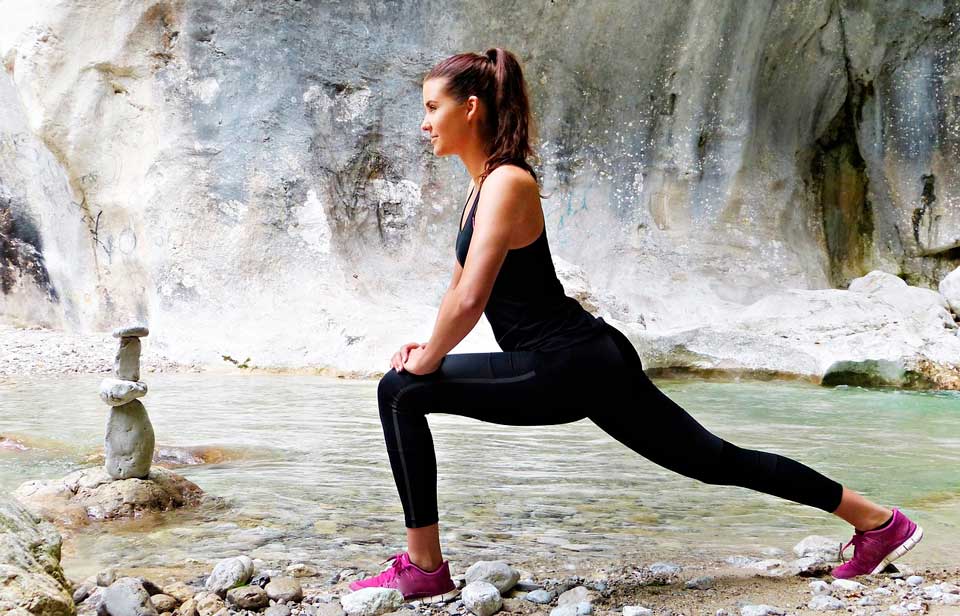
FIRST CLASS
The first Pilates classes are directed to build the foundation, the base, on which each movement must be carried out afterwards. Learning to stabilise / fix your scapulae (when the exercise requires it), move your pelvis and place it in the right position for each exercise to avoid injuries, maintain a correct position of your head, or rather to know where there are your head and shoulders, that they are seemed not to belong to us, since they have their own life; you do not know now it yet, but you will soon realise, how bad you control your body and how many motor maps and patterns you will have to redraw in your cortex.
Learning to connect with your centre correctly, learning how to contact your pelvic bottom muscles together with your abdominal muscles effectively, and learning to pull your muscles inwards and upwards or to dissociate movements – all these are the necessary keys to do the exercises correctly.
The teaching is paramount and ensures that you can acquire the optimal and necessary knowledge of functioning of your body, which will give you a possibility to taste the control and precision, doing each exercise, and will make you feel powerful; you will be able to smell endorphins that you will produce. And do you know what it is good to enjoy control and experience control and precision of your movements?
Be a degree / stage of learning like previous one, you could transfer those emotions (e-Movere) to any other sphere of your life. You can immerse into another different experience as unsure as you feel, with that backpack of positive emotions already "experienced"; it will give you a possibility to win. Although there is the past and negative experience, if you are dressed with these emotions and go through them again, you will leave them with another flavour, of course, bitterer one.
In Pilates, every movement has a purpose just like every action of your life, and knowing the movement is vital. Therefore, learning principles of the method and applying them is essential to understand the potential of exercises and get the greatest benefit. Pilates is a discipline, it creates discipline. Only providing the basis, we can create a smart, safe and effective movement.
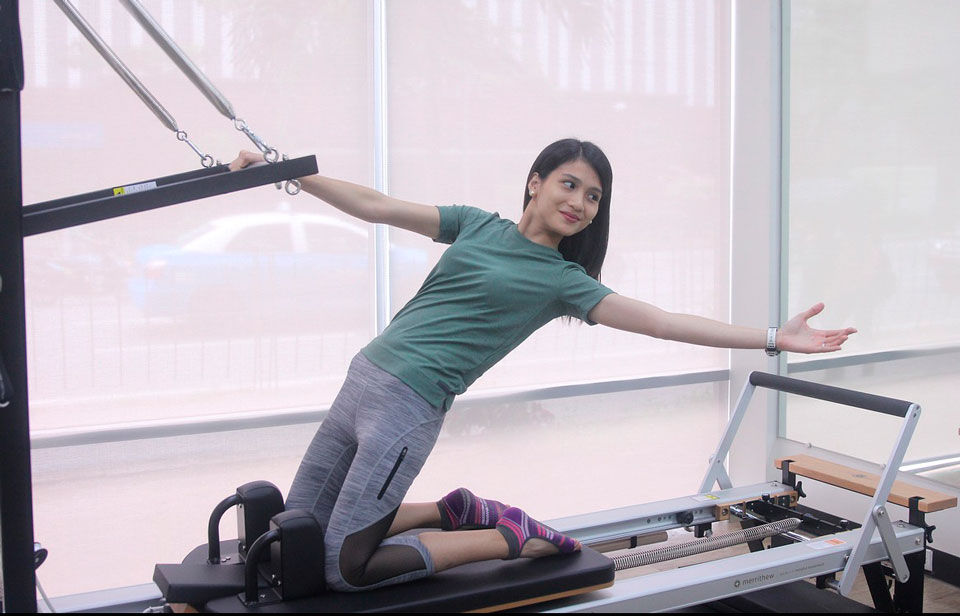
BENEFITS OF THE PILATES METHOD
Among the innumerable benefits obtained by application of the principles explained above, it is worth to mention:
-
- STABILITY: DO NOT confuse STATICITY, one should see with: ability to generate Forces counteracting other unbalancing forces, to maintain Control and Integrity of the joint. The main stabiliser is your MUSCLES, or at least the one we can influence. Active Stabilisation ➺ Muscles ➺ CNS. A fundamental aspect also of Stability is also Variability; this is very important for health of the connective tissue in general!
- IMPROVEMENT OF YOUR POSTURE: Re-educating and strengthening the muscles of your spine and abdominal area, the so-called CORE, or, in addition, it is better POWER HOUSE that also includes your scapular belt, helping improve your posture.
- SELF-AWARENESS, learning how to be HERE and NOW.
- STRENGTH: If your muscles work clearly there is improvement in muscular strength, but not excessive, or by improvement in the calibration of your muscle spindles, which give a possibility for improvement of AFFERENT stimuli entries and consequent EFFERENT response by a part of your CNS.
- MUSCULAR ENDURANCE is the ability of a muscle to resist for a long time. Increasing muscular endurance is not only beneficial for sports performance is also an important component in any physical activity.
- COORDINATION improves with practice and repetition of the exercises, it is really the lack or blurred drawing of a movement in your motor cortex, that Impedes good coordination. The more it is practiced, the more coordination in the movement is acquired.
- JOINT MOTION RANGE: Each joint has an anatomical ROM (Range Of Motion) determined by its structure (shape) and its passive and active structural support. Passive structural support does NOT serve by itself to achieve functional stability, since active support of your muscles is essential for the final equation. Without the muscles, your joints would lose their integrity. The Range improves thanks to stability of a joint; such stability is interpreted as an ability to control a joint at each ROM positions.
- EFFICIENCY OF MOVEMENT: An efficient movement is such that a given amount of work is done with the least expenditure of energy. An efficient movement is a permanent advantage.
- AGILITY is not only a muscular concept but also a mental one.
- MUSCLE BALANCE: If a weak link is eliminated it will be possible to achieve the muscle balance between the right and left parts of the body.
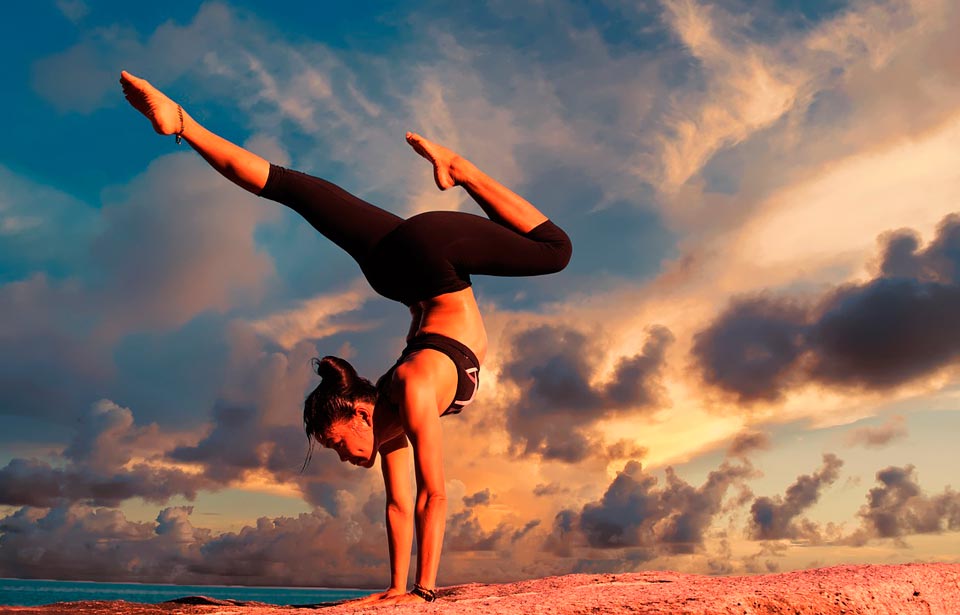
WHO MUST PRACTICE PILATES?
Everyone, almost everyone must practice Pilates as follows: children, adults, golden age people, pregnant women, sports professionals, artists, elite sportspeople, people with back and kneels problems.
Joseph said: “Motion heals" and "A human being is as young as his spine". It is true.
There is Pilates for everyone like colours. Now, no so many good Teachers of Pilates, who know how to give everyone what he or she need. Those are worth gold and you must know how to find them.
It is very important to practice Good Pilates, but not to trust imitations.
The only problem with Pilates ... is that it CREATES ADDICTION.
It is never too late to prove it and become a tool that helps you take out the hero inside yourself.






